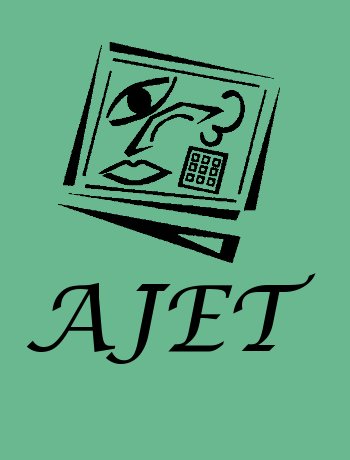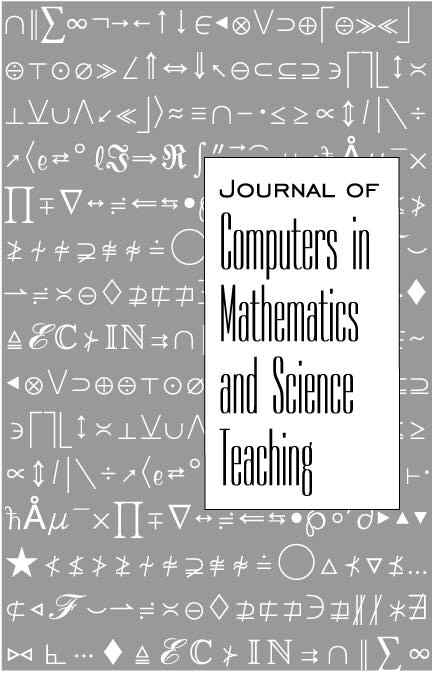Browsing by Subject: Schools
-
Connecting schools, community, and family with ICT: Four-year trends related to school level and SES of public schools in Florida
Tina N. Hohlfeld, Albert D. Ritzhaupt & Ann E. Barron
Computers & Education Vol. 55, No. 1 (August 2010) pp. 391–405
Community and family involvement in schools is a well-documented antecedent to student success; yet, educators often find it challenging to increase involvement with parents and members of diverse ... More
pp. 391-405
-
The Internet in Indian Country
Barbara Monroe
Computers and Composition Vol. 19, No. 3 (2002) pp. 285–296
Even though access is still unreliable and under-supported, tribal councils and reservation schools are embracing digital technology with relative enthusiasm. Three main patterns of technology use ... More
pp. 285-296
-
School improvement plans and student learning in Jamaica
Marlaine Lockheed, Abigail Harris & Tamara Jayasundera
International Journal of Educational Development Vol. 30, No. 1 (January 2010) pp. 54–66
A school improvement program that provided support to poor-performing schools on the basis of needs identified in a school improvement plan was implemented in 72 government schools in Jamaica, from... More
pp. 54-66
-

ICT integration in schools: Where are we now and what comes next?
Colin Baskin, Michelle Williams & Michelle Williams
Australasian Journal of Educational Technology Vol. 22, No. 4 (Jan 01, 2006)
The case for more technology in schools is compelling. The leverage for a school based solution is traceable to theCommon and Agreed National Goals for Schooling (AEC, 1989), namely that students... More
-

An Exploration Study of RimbaIlmu: A Qualitative Evaluation of Shared Single Display Groupware in Sarawak, Malaysia
Cheah Waishiang, Edwin Mit & Marlene Lu
International Journal of Emerging Technologies in Learning (iJET) Vol. 10, No. 1 (Feb 21, 2015) pp. 79–86
Shared single display groupware that enables collaboration among people from different cultures and social practices encourages peer learning and teaching, whilst strengthening communication skills... More
pp. 79-86
-

Learning about Surface Area through a Digital Fabrication-Augmented Unit
Kimberly Corum & Joe Garofalo, University of Virginia, United States
Journal of Computers in Mathematics and Science Teaching Vol. 35, No. 1 (January 2016) pp. 33–59
Surface area is consistently identified as a curriculum standard for K-12 students and it regularly appears on national and international assessments. Recently, many schools began acquiring digital... More
pp. 33-59
-

Evaluating the Performance of Online K-12 Schools
Dick Carpenter, University of Colorado Colorado Springs, United States; Krista Kafer, Independent Educational Consultant, United States; Kelly Reeser & Sheryl Shafer, Consultant, Colorado Department of Education, United States
International Journal on E-Learning 14 (2015) pp. 423–441
This article examines K-12 online student and school performance across an entire state (Colorado) in the United States through two comparisons. First, state assessment scores of students in online... More
pp. 423-441
-

Challenges in ICT Implementation in Teacher Education Colleges as Viewed by the ICT coordinator
Merav Asaf, Kaye Academic College of Education, Israel; Miri Shonfeld, Kibbutzim College of Education, Israel; Alona Forkosh-Baruch, Levinsky College of Education, Israel
EdMedia + Innovate Learning 2015 (Jun 22, 2015) pp. 1581–1586
ICT coordinators of 8 Teacher Education Colleges were interviewed about the integration of educational technology within their colleges. In this study, challenges of the implementation process were... More
pp. 1581-1586
-

The Tension Created by the Use of PowerPoint in University Business Schools
Dale Foster, Memorial University, Faculty of Business Administration, Canada
EdMedia + Innovate Learning 2015 (Jun 22, 2015) pp. 1057–1066
This paper describes the results of a survey of students and instructors on the use of presentation software in a university business school. This study reveals tensions between the benefits of... More
pp. 1057-1066
-

The Promise of Online Teacher Preparation for Rural and High-Need Schools: Lessons Learned About Recruitment, Preparation, and Support
Dana Seymour, Anastasia Elder, Nicole Miller & Dekota Cheatham, Mississippi State University, United States
E-Learn: World Conference on E-Learning in Corporate, Government, Healthcare, and Higher Education 2015 (Oct 19, 2015) pp. 1624–1629
Alternative certification and online teacher education programs have been developed, in part, to address teacher shortages, and have potential to help provide quality teachers for rural schools,... More
pp. 1624-1629
-

Virtual Schools and the Invisible Influence
Hatem Raja Alotebi, Cleveland State University, United States
E-Learn: World Conference on E-Learning in Corporate, Government, Healthcare, and Higher Education 2015 (Oct 19, 2015) pp. 1374–1383
Abstract: This paper is dedicated to an innovation in the sphere of education – virtual school, which tends to become the leading in present times. The paper closely considers distinctions between ... More
pp. 1374-1383
-

E-Learning Acceptance by Secondary Schools Educators in South Africa
Tlou Kabe, Billy Kalema & Ignitia Motjolopane, Tshwane University of Technology, South Africa
E-Learn: World Conference on E-Learning in Corporate, Government, Healthcare, and Higher Education 2015 (Oct 19, 2015) pp. 1326–1331
This paper presents e-learning acceptance by South African secondary schools educators. The study was informed by data collected from schools in the Tshwane District of Gauteng province in South... More
pp. 1326-1331
-

Student and Parent Perceived Technological Efficacy, Social Uses of Technology, and Technological Contribution: A Dyadic Analysis
Wilfred W.F. Lau, The Chinese University of Hong Kong, China
E-Learn: World Conference on E-Learning in Corporate, Government, Healthcare, and Higher Education 2015 (Oct 19, 2015) pp. 1027–1031
This study examined the interdependence of student and parent Perceived Technological Efficacy (PTE), Social Uses of Technology (SUT), and Technological Contribution (TC) derived from the Positive ... More
pp. 1027-1031
-

Nodes and Connections for implementing connectivist learning in online education
Harris Wang, Athabasca University, Canada
E-Learn: World Conference on E-Learning in Corporate, Government, Healthcare, and Higher Education 2015 (Oct 19, 2015) pp. 966–975
Connectivist learning is learning through connections and networking. Although it is yet to be widely accepted as a new learning theory, compared to three existing learning theories known as... More
pp. 966-975
-

Pre-service teacher ICT skill-set: Not a simple issue
Kathy Jordan, RMIT University, Australia; Leanne Compton, Victorian Curriculum and Assessment Authority, Australia
E-Learn: World Conference on E-Learning in Corporate, Government, Healthcare, and Higher Education 2015 (Oct 19, 2015) pp. 799–806
For some time, a consistent theme in Teacher Education has been that graduates lack the necessary skill-set to use ICT in their practice. In Australia, the recent implementation of national... More
pp. 799-806
-

Inducing Language Teachers to Use Tablets in the Classroom: Lessons Learned
Judith Lin, Hsin-Ying Hsu & Greg Lee, National Taiwan Normal University, Taiwan
E-Learn: World Conference on E-Learning in Corporate, Government, Healthcare, and Higher Education 2015 (Oct 19, 2015) pp. 390–396
Even though there has been a trend of integrating mobile technology into teaching and learning, little has been known about the key factors to successfully incorporate mobile technology into... More
pp. 390-396
-

Setting up a University iPad Lab for Preservice Teachers to Develop Technology Skills for the Classroom
Michelle Beach, Paulette Stefanick & Debbie VanOverbeke, Southwest Minnesota State University, United States
E-Learn: World Conference on E-Learning in Corporate, Government, Healthcare, and Higher Education 2015 (Oct 19, 2015) pp. 267–271
Abstract: The evidence shows a phenomenal increase in the number of schools that have purchased Apple’s iPad tablets for classrooms. While the impetus of the schools’ iPad implementation may have ... More
pp. 267-271
-

E-learning as a Motivator in Teaching and Learning in The Saudi University Context
Naif Alsayyali, Indiana University of Pennsylvania, United States
E-Learn: World Conference on E-Learning in Corporate, Government, Healthcare, and Higher Education 2015 (Oct 19, 2015) pp. 251–255
The number of students who are enrolling in online courses is expanding exponentially. For this reason, many schools in the Kingdom of Saudi Arabia (KSA) are moving towards an electronic means of... More
pp. 251-255
-

Introduction and development of Active Learning with ICT with the opportunities of E-learning
Thiery Tachel, Secondary School Ypres, Belgium; Sabine Buseyne, Middenschool Ypres, Belgium; Philip Everaerts, School District ‘Westhoek’, Belgium
E-Learn: World Conference on E-Learning in Corporate, Government, Healthcare, and Higher Education 2015 (Oct 19, 2015) pp. 37–44
This paper is a report on the findings of the implementation of the subject ‘Active Learning with ICT’. These findings can be used in different schools and different countries to start with ICT in... More
pp. 37-44
-
Writing in a History of Mathematics Capstone Course
John Carter
PRIMUS Vol. 24, No. 6 (2014) pp. 544–556
This article presents two approaches to using original sources in a capstone writing project for a History of Mathematics course. One approach involves searching local libraries and is best suited ... More
pp. 544-556
